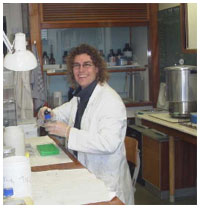home > research > research themes: genetic structure of seagrass populations
Genetic Structure Of Seagrass Population
 Marine species, as marine habitats are often viewed as having few strong barriers to dispersal, possibly due to poor understanding of the nature of limitations to gene flow in marine environment. However, an increasing number of studies report high differentiation and restricted gene flow between marine populations, despite high dispersal potential. The elucidation of the factors responsible for such divergence is difficult but essential to understand evolutionary and speciation processes. In this topic we aim at inferring population genetic variability and differentiation at different spatial scales in order to provide insight in the predominant causes of genetic structure, allowing the identification of physical and biotic factors limiting gene flow. We use all four European seagrass species as model species for these questions because i) these are keystone ecosystem structuring species, ii) can have contrasting clonal and sexual colonization strategies and iii) there is widespread regression and loss of seagrass meadows and management predictions as well as restoration efforts should take into account genetic differentiation within and between populations and the factors inferred to influence these. Marine species, as marine habitats are often viewed as having few strong barriers to dispersal, possibly due to poor understanding of the nature of limitations to gene flow in marine environment. However, an increasing number of studies report high differentiation and restricted gene flow between marine populations, despite high dispersal potential. The elucidation of the factors responsible for such divergence is difficult but essential to understand evolutionary and speciation processes. In this topic we aim at inferring population genetic variability and differentiation at different spatial scales in order to provide insight in the predominant causes of genetic structure, allowing the identification of physical and biotic factors limiting gene flow. We use all four European seagrass species as model species for these questions because i) these are keystone ecosystem structuring species, ii) can have contrasting clonal and sexual colonization strategies and iii) there is widespread regression and loss of seagrass meadows and management predictions as well as restoration efforts should take into account genetic differentiation within and between populations and the factors inferred to influence these. |
|
 |
 |
| Clockwise from the top, Onno Diekmann extracting DNA from Zostera noltii, Filipe Alberto sampling a Mediterranean meadow of Cymodocea nodosa and some sampling of Posidonia oceanica in the Mediterranean. | |


